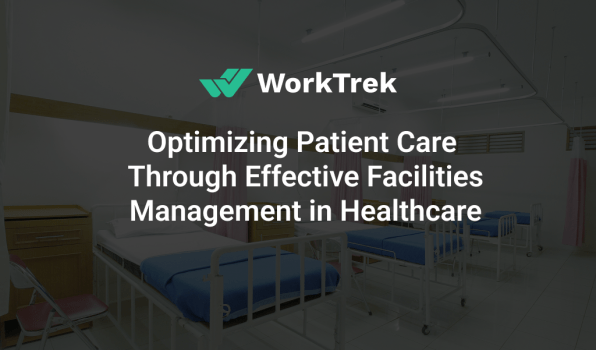Traditionally, work order management has been a manual process involving paperwork, spreadsheets, and phone calls that can be time-consuming, error-prone, and lack real-time visibility.
Fortunately, WOM software has emerged as a powerful tool for streamlining and optimizing maintenance tasks. With the right software in place, businesses can automate many of the tasks associated with work order management, freeing up valuable time and resources.
Automate scheduled maintenance
Using one of these systems, you can quickly create scheduled maintenance tasks that will automatically generate work requests in just a few clicks. These systems can take into account specific maintenance processes of equipment and auto-generate the work order necessary to complete the task.
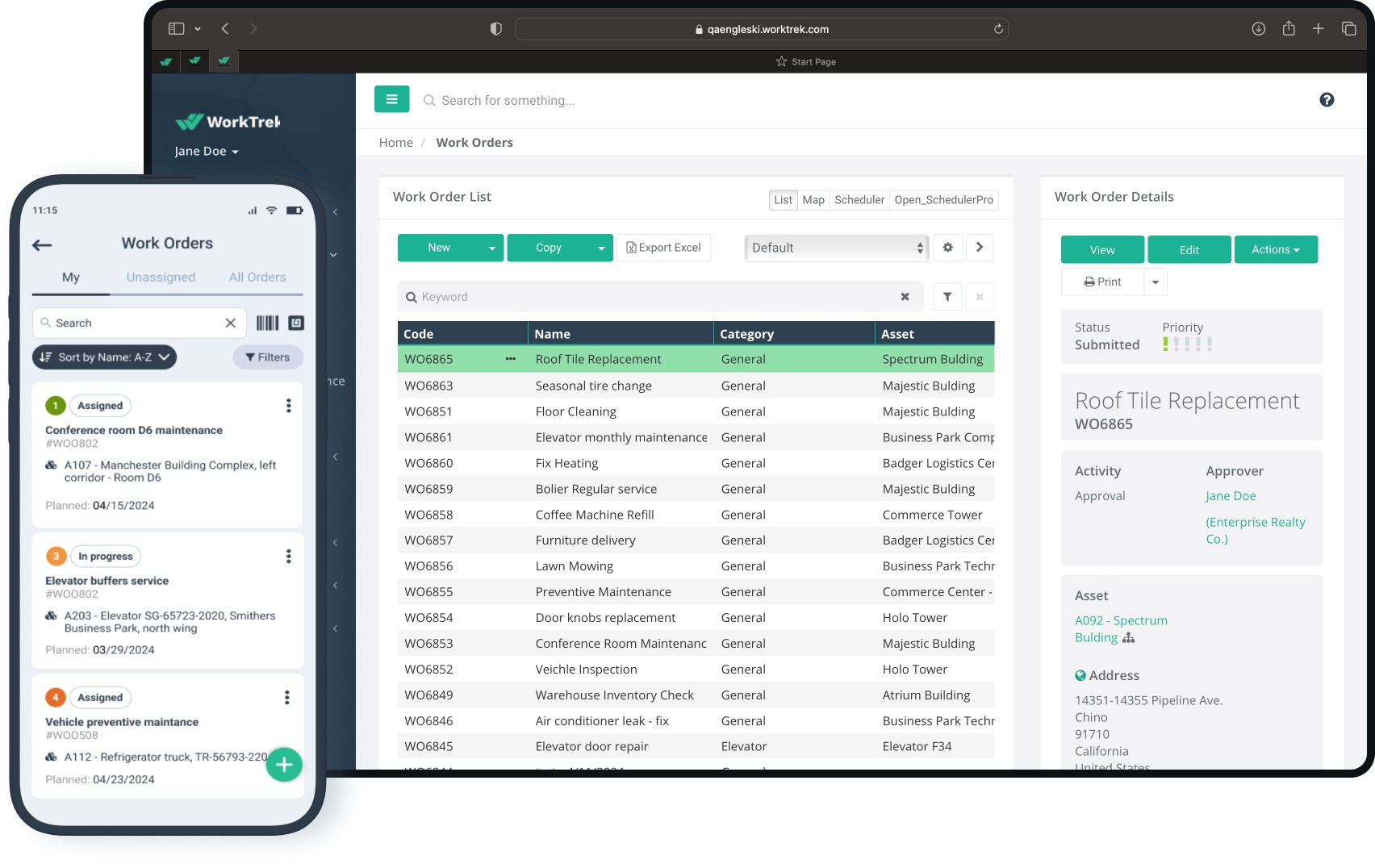
Source: WorkTrek
Insights into Work Requests
Additionally, WOM software provides real-time insights into asset management and maintenance, enabling businesses to identify areas for improvement and make data-driven decisions.
This data can provide critical insight for the maintenance teams to quickly evaluate the efficiency of the team performance, equipment maintenance requests, part costs, and the overall organizational work order tracking system.
By implementing an effective work order management system, businesses can experience numerous benefits, including reduced downtime, improved productivity, extended asset life, and enhanced customer satisfaction.
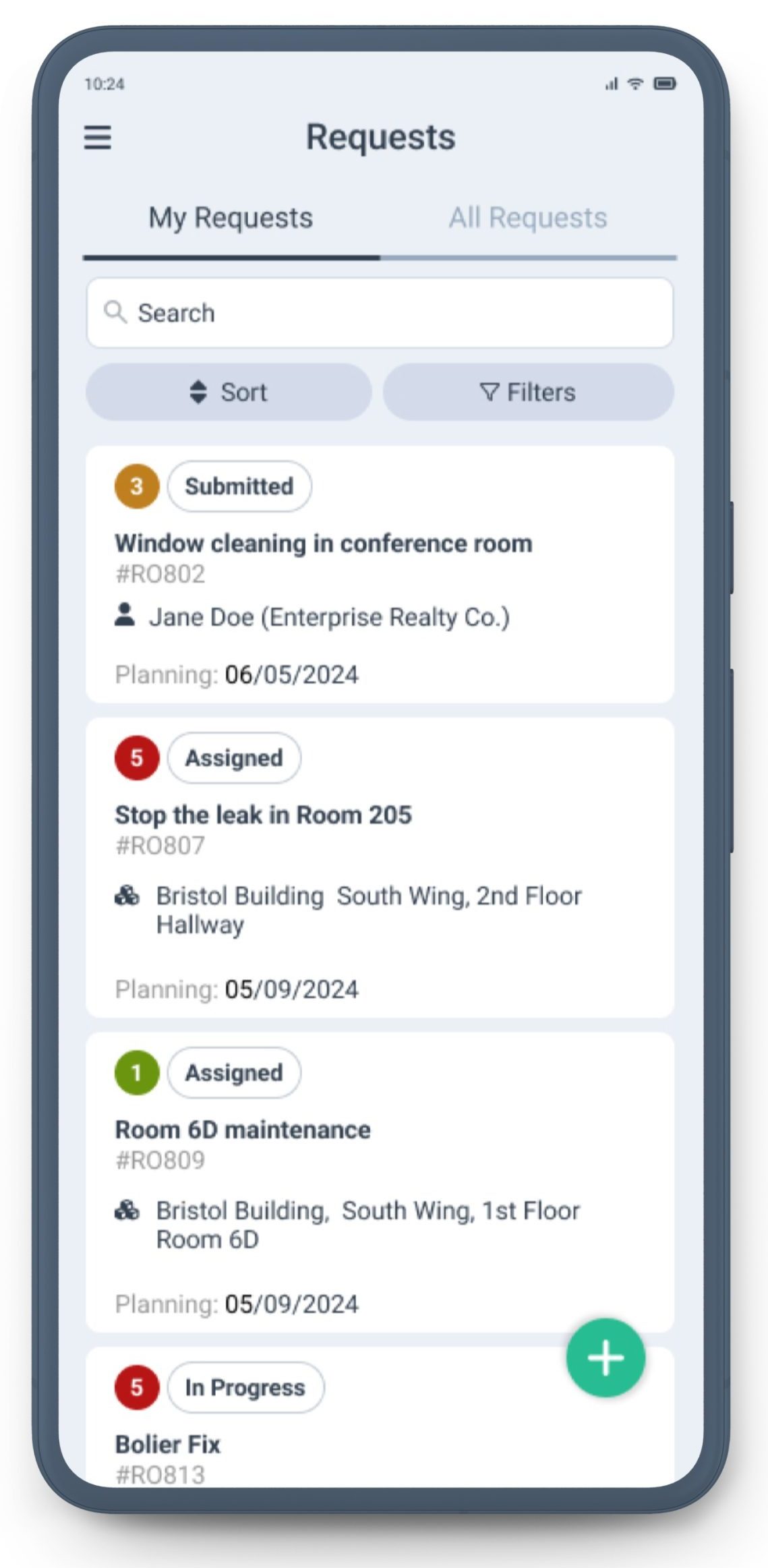
Source: WorkTrek
Gain a Competitive Advantage for Service Requests
Businesses can achieve these benefits using Work Order Management software and gain a competitive edge in their respective industries. This can be achieved by improving operational efficiency, work order management, and tracking and decreasing the cost of maintenance overall.
In this blog, we will dive into the world of work order management, explore the benefits of using WOM software, outline key features to look for in a software solution and guide organizations looking to select the right software for their business.
We will also provide several practical tips for successful implementation and maximizing the value of work order management software.
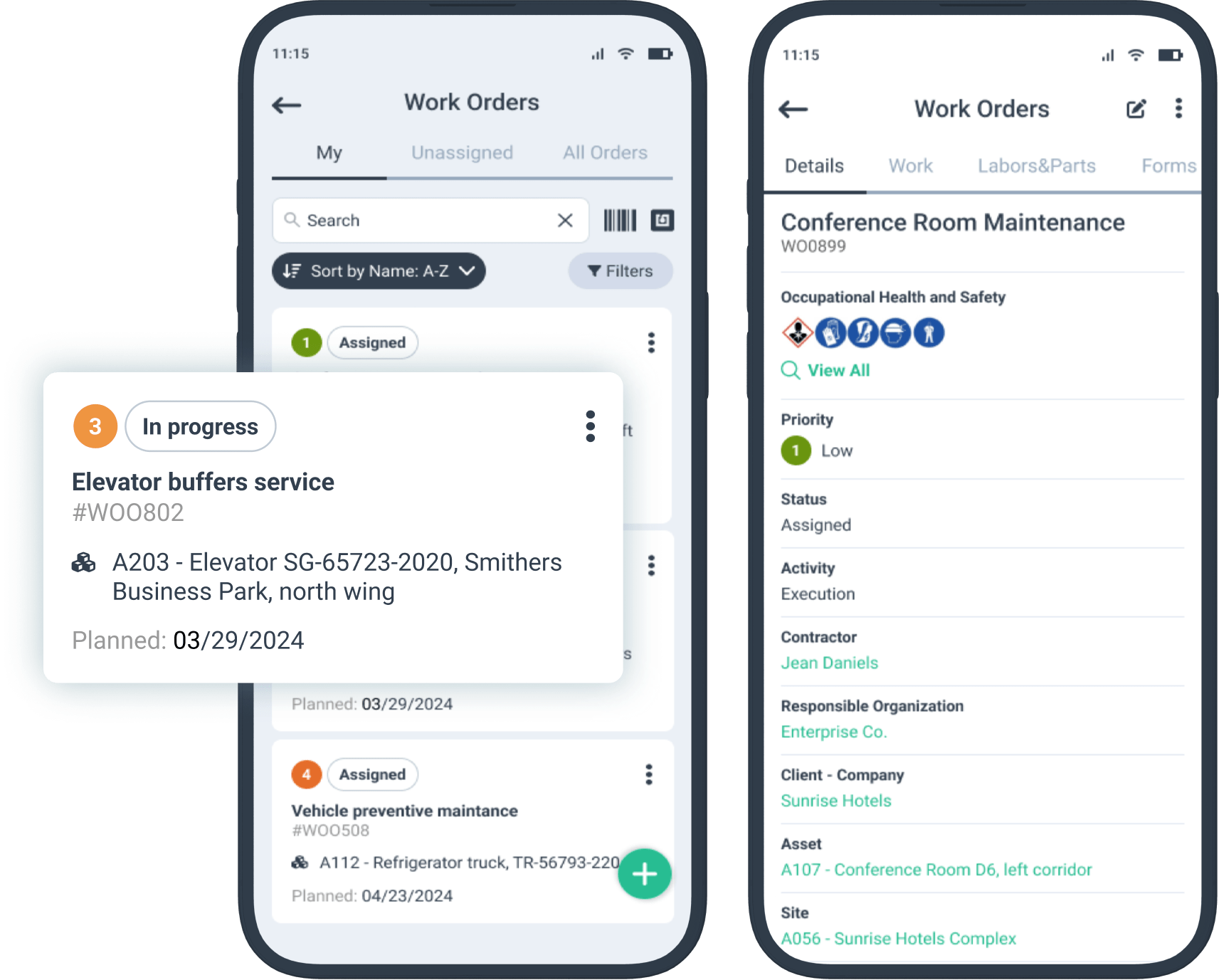
Source: WorkTrek
Benefits of Preventive Maintenance Tasks
Preventive maintenance refers to the proactive approach of maintaining equipment and systems by performing regular check-ups and repairs to prevent potential problems before they occur. This method stands in contrast to reactive maintenance, which deals with repairs after a failure has happened.
The philosophy behind preventive maintenance is simple yet impactful: “An ounce of prevention is worth a pound of cure.” Below, we explore the multifaceted benefits of preventive maintenance, highlighting its significance across various industries.
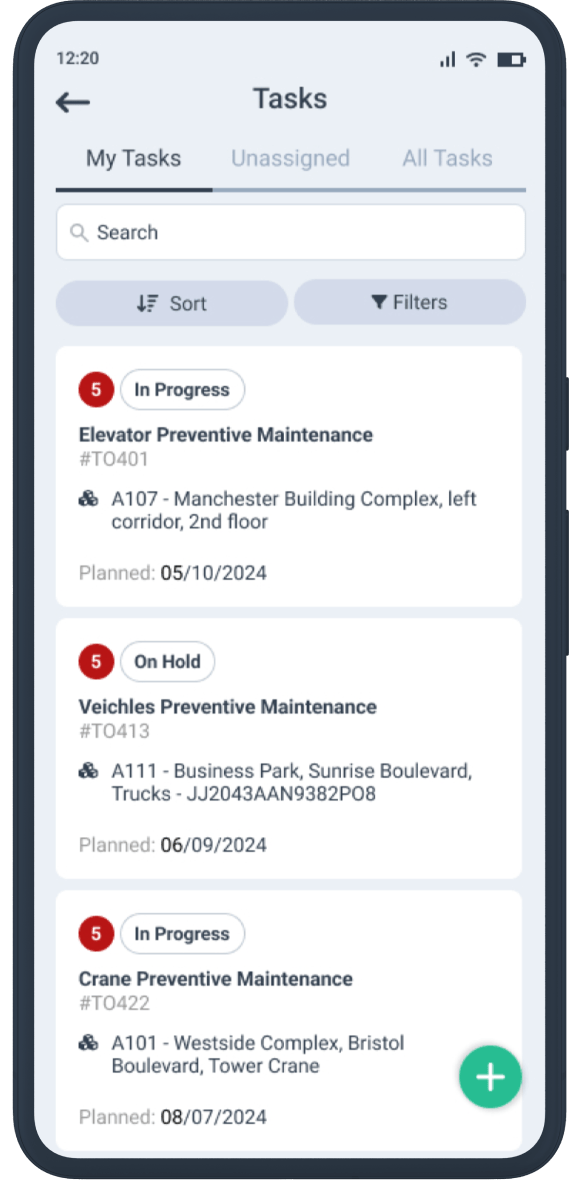
Improved Safety and Reduced Risk of Accidents
First and foremost, preventive maintenance significantly enhances safety in the workplace. Regular inspections and maintenance of machinery and equipment help identify and rectify potential hazards, such as loose or damaged components, before they lead to accidents. It can help extend the overall life of equipment, reduce equipment downtime help track assets.
This protects the workforce and minimizes the risk of catastrophic failures that could have severe repercussions on both human life and the environment.

Source: Freepik
Enhanced Equipment Efficiency and Reliability
Regular maintenance ensures that equipment operates at optimal efficiency. Machines run smoother by replacing worn parts, lubricating moving components, and correcting minor issues, and they consume less energy.
This reliability is crucial for industries where equipment downtime can lead to significant production losses. Efficient equipment is also more eco-friendly, using less energy and producing fewer emissions.

Source: WorkTrek
Extended Equipment Lifespan
Another significant advantage of preventive maintenance is the extension of equipment lifespan. Regular check-ups and repairs reduce machinery’s wear and tear, prolonging its serviceable life.

Source: WorkTrek
Lower Capital Expenses
This means companies can defer the capital expenses associated with purchasing new equipment, offering substantial financial savings over time. Furthermore, extended equipment lifespan contributes to sustainability by reducing waste and the need for new resources.

Source: Freepik
Decreased Costs and Increased Profitability
While preventive maintenance requires upfront investment, the long-term cost savings are considerable. By avoiding major breakdowns, companies save on expensive emergency repairs, which often cost significantly more than regular maintenance.

Source: Freepik
Minimizing Downtime of Critical Equipment
Additionally, minimizing unplanned downtime means more consistent production schedules, leading to higher productivity and profitability. These cost savings can then be reinvested into the business, fostering growth and innovation.
Improved Product Quality
Equipment in good working condition is more likely to consistently produce high-quality products. Preventive maintenance helps maintain machinery’s precision and efficiency, which is crucial in industries where quality control is paramount. This not only satisfies customers but also strengthens the company’s market reputation.

Source: WorkTrek
Enhanced Planning and Scheduling
Preventive maintenance allows for better planning and scheduling of maintenance activities. Since maintenance is performed on a regular schedule, companies can plan these activities during off-peak times, minimizing the impact on production. This work order management process also includes the orderly procurement of necessary parts and supplies, avoiding last-minute scrambles that can lead to delays and higher costs.

Source: Freepik
Optimize your Maintenance Operations
One of the major benefits of using work order software is that it can streamline efficiency by automating repetitive tasks. From work order creation and assignment to tracking and completion, software effortlessly orchestrates these processes, allowing your business to operate with agility and focus.
Centralized work order management serves as the nerve center of your maintenance, providing real-time updates and comprehensive maintenance histories.
It can also foster effective communication and collaboration within the maintenance team. Work order management software can transcend departmental boundaries, enabling seamless collaboration between maintenance teams, technicians, project managers, and stakeholders.
Reduce Downtime
This can accelerate issue resolution, minimize downtime, and elevate operational efficiency, improving the time the maintenance team delivers maintenance tasks.
WOM software can also record every work-related activity, delineating responsibilities and centrally tracking issues using dashboards, reports, and performance assessments. This transparency empowers your team to excel and drives continuous improvement while reviewing and performing preventative maintenance in a central location.
Improve ROI
This approach can also improve cost controls and increase overall ROI on assets. By optimizing maintenance operations, software minimizes unplanned downtime, extends asset lifecycle, and transforms data into actionable insights. These benefits translate into reduced maintenance costs, optimized asset utilization, and a surge in profitability.
Key features to look for in work order management software
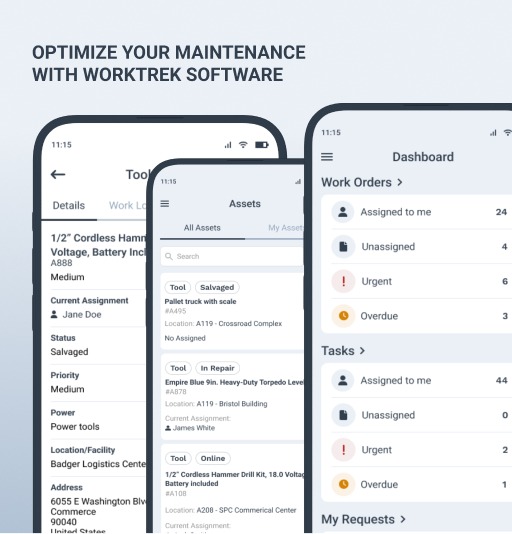
Source: WorkTrek
Real-time tracking and monitoring of work orders is crucial for efficient work order management. With the right software, you can gain instant visibility into the status of work orders, track progress, and identify any potential delays or bottlenecks. This enables proactive issue resolution and ensures that work orders are completed on time.
Any work order software should have the following features:
- Manage multiple assets and multi-asset work orders
- Provide a seamless experience for field technicians
- Provide the ability to easily attach photos and videos
- Provide mobile push notifications to any mobile device
- Allow simple maintenance requests on the user interface
- Allow users to easily generate reports and see analytics
- Provide Maintenance Schedules that are easy to manage
- Facility management
- Detailed Work History
- Inventory management
- Process automation
- Easy access for maintenance personnel
- Easy access to asset details and maintenance data
- Allow users to create a maintenance task quickly
- Provide automatic routing of service requests
Automate Notifications
Automated notifications and alerts can help stakeholders stay informed and ensure timely responses for the organization. The software should allow maintenance managers to automatically send notifications to assigned technicians, supervisors, and managers when work orders are created, updated, or require attention.
This can help the organization respond promptly to urgent work orders and keep all stakeholders notified throughout the process.
Inventory Tracking and Parts Management
When evaluating Work Order Software, look for products that support inventory and parts management. Having parts management built in can streamline maintenance, help with inventory management, allow you to easily create notifications when parts are below a threshold, and simplify assigning of parts to work requests promptly.
Some systems can generate purchase orders automatically and integrate with accounting systems to automate product ordering.
Integrations with ERP or CRM tools
In certain situations, integration with other business systems is essential for a comprehensive work order management solution. Depending on the use case, some systems can integrate with enterprise resource planning (ERP), customer relationship management (CRM), and asset management systems.
This type of integration allows information such as parts costs, repair expenses, and status of work orders to be synced automatically, reducing and, in some cases, eliminating the need for manual data entry and reducing the risk of errors.
Reporting and Analytics
Reporting and analytics capabilities are critical for data-driven decision-making. The software should provide robust reporting and analytics features that allow you to generate customized reports, analyze trends, and identify areas for improvement.
This enables the maintenance team to make informed decisions about resource allocation, and maintenance strategies, evaluate asset performance, and overall work order management processes.

Source: WorkTrek
User-Friendly Interface
Ease of use and implementation are crucial for successful software adoption. The work order software should be user-friendly and intuitive, with a simple interface.
The implementation process should be smooth and efficient, with minimal disruption to your operations. Look for software that offers training and support resources to ensure a successful rollout and ongoing user adoption.
Asset Management
When considering a work order management system, evaluate the product’s ability to easily import and manage all of your assets. This includes spare parts, major equipment, and even locations.
Another feature to look for is triggers to notify maintenance managers when critical parts are below a set threshold. This ensures that your staff has access to critical parts while they are completing work orders.
How to choose the right work order software for your business
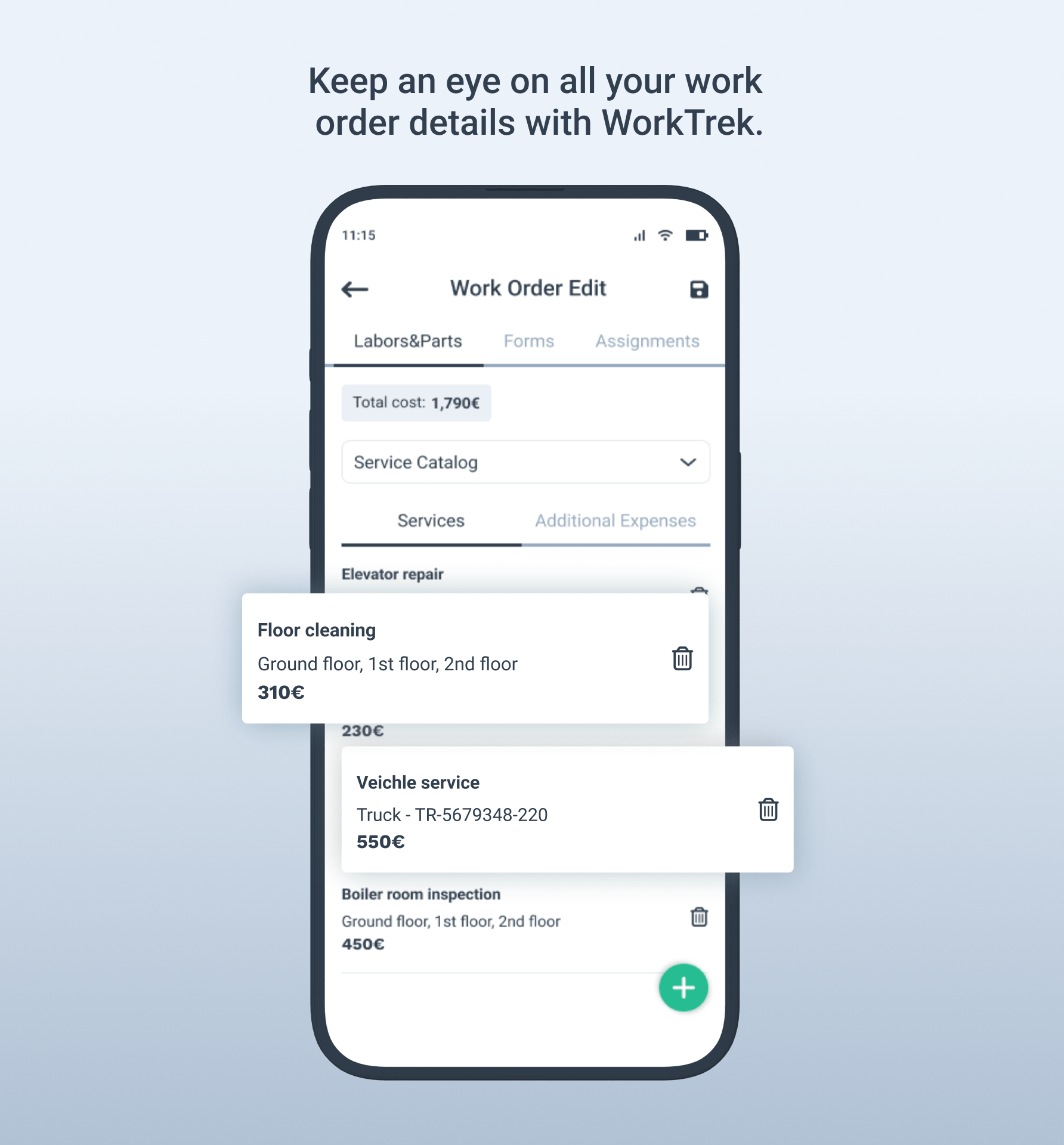
Source: WorkTrek
The best way to start choosing work order software is to outline your organization’s specific requirements. Important factors to consider are:
- Size of your business
- Number of locations
- Type of business – manufacturing, facility management, or warehouse management, among others.
- Volume of Work Orders
- Composition of staff – internal or external technicians
- Automated notifications
- Integration with existing systems, such as ERP or CRM
- Real-time tracking of parts inventory
- Robust reporting tools
- Modern and easy to use User Interface
- Intuitive Mobile app and ability to easily track and create tasks on a mobile device
- Simple UI to create a maintenance request
Mobile App and Push Notification
Having a full-featured mobile app that is easy to use and provides push notifications is important to consider when selecting a new system. Any solution should work across all mobile devices and be easy to use, which will lead to improved team performance.

Source: Freepik
Quality Support
Quality support from the company is critical for any product’s success for deployment and ongoing day-to-day usage. Evaluate a company’s support structure before making your final decision. You can do this by calling support on your own or talking to existing customers. Emphasize to the sales team that support is critical in your decision process.
Also, make sure to understand the Service Level Agreement (SLA) and how quickly the company addresses bugs or service requests.

Source: Pexels
Demos and Free Trials
Request demos or trials to personally test the software’s functionality and user-friendliness. Ask for a free trial along with some of your inventory data to be uploaded to the system. This hands-on approach will help you make an informed decision that aligns perfectly with your business goals.
Also, the demo system should be used internally to get buy-in from all stakeholders.
By considering these factors and choosing the right software, you can deploy a system that will improve your maintenance operations, schedule maintenance, enhance efficiency, improve product reliability, and reduce unexpected repairs.

Source: WorkTrek
Tips for implementing work order software successfully
To ensure the successful implementation of maintenance work order software, it’s crucial to clearly understand your business requirements and processes before you begin your search for software. Having a full inventory of current equipment and assets will also be helpful.
For instance, understanding equipment maintenance schedules, the required preventive maintenance, and your overall service request flow is critical to finding the right solution.
This will help you identify the specific features and capabilities that are necessary for your business. Additionally, it’s important to select a scalable solution that can grow with your business.
Consider factors such as the number of users, the volume of work orders, and the complexity of your maintenance process.
Implementing your maintenance work order software system
Once you have selected a maintenance work order software, it’s essential to ensure that it is easy to use and can be easily adopted by both your internal employees and external contractors to help streamline maintenance.
Training is the other area you want to focus on. Ask the word order software provider to provide training for your entire staff. This step ensures that your entire staff is on the same page.
It’s also important to involve your employees in the implementation process and to get their feedback on the software to ensure that it meets their needs.

Source: Pexels
Review KPIs and Iterate
Finally, it’s important to regularly review and update your work order processes to ensure that the software is being used effectively. This may involve tracking key performance indicators (KPIs) and making adjustments to your processes as needed.
By following these tips, you can greatly increase the chances of successful implementation of maintenance work order software and realize the benefits of improved efficiency, productivity, and customer satisfaction.

Source: WorkTrek
Conclusion
The benefits of preventive maintenance are clear and compelling. From improving safety and extending equipment lifespan to enhancing efficiency and profitability, the proactive approach to maintenance offers a strategic advantage.
By implementing work order management software, companies can not only avoid the pitfalls of equipment failure but also improve the bottom line. Adopting preventive maintenance is not merely a cost-saving measure; it’s a cornerstone of responsible and forward-thinking business operations and helps streamline maintenance tasks.







